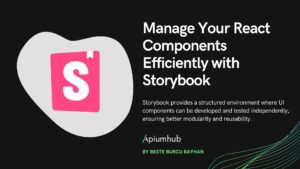Table of Contents
The Transactional Outbox Pattern is a design pattern used in distributed systems to ensure consistency and reliability when dealing with distributed transactions. In a distributed system, transactions may involve multiple services or components, and coordinating them can be challenging. The Transactional Outbox Pattern provides a solution to this problem by introducing an outbox table in the database. Keep reading to learn more about its benefits!
Transactional Outbox Pattern Benefits
The Transactional Outbox Pattern offers several benefits in the context of distributed systems and microservices architecture:
Atomicity and Consistency
By including the outbox operations within the same database transaction as the rest of the local operations, the pattern ensures atomicity. If any part of the transaction fails, the entire transaction, including the outbox operation, is rolled back, maintaining consistency. Consistency is upheld through the transactional outbox pattern, guaranteeing the reliable transmission of messages. The use of transactions ensures that messages are either sent in their entirety or not at all, thereby enhancing the integrity of our message delivery process.
Reliable Message Delivery
The Outbox Processor, responsible for sending messages from the outbox, runs independently and asynchronously. This decoupling ensures that even if the main transaction succeeds but the message-sending process fails, the system can retry without impacting the primary operation.
Improved Scalability
The pattern enhances the scalability of distributed systems by decoupling transactional logic from the message-sending process. Services can process local transactions without being blocked by potentially time-consuming or failure-prone communication with other services.
Reduced Latency
The transactional outbox allows services to commit local changes quickly without waiting for external communication to complete. This reduces the overall transaction time, improving the responsiveness of the system.
Loose Coupling Between Services
The Outbox Pattern promotes loose coupling between services. Services only need to be aware of their local transactions and the messages they publish to the outbox. They don’t need to know or wait for the state changes in other services.
Idempotent Processing
The pattern encourages the design of message processing logic to be idempotent. This ensures that even if a message is delivered and processed multiple times (due to failures or retries), the outcome remains the same, preventing unintended side effects.
Easier Maintenance and Upgrades
Services can be updated or replaced without disrupting the entire system. The outbox pattern allows changes to be made to a service independently, as long as it continues to produce messages in a compatible format for downstream services.
Support for Event-Driven Architecture
The Transactional Outbox Pattern aligns well with event-driven architectures. It enables services to emit events as part of their transactions, facilitating the propagation of events throughout the system reliably and consistently.
Resilience to Failures
The pattern enhances system resilience by allowing the reprocessing of messages in case of failures during message delivery. The Outbox Processor can be designed to handle retries, ensuring that messages are eventually delivered.
Simplified Error Handling
Errors that occur during message delivery can be handled independently of the main transaction. This separation simplifies error handling, making it easier to diagnose and recover from issues without affecting the integrity of the local transaction.
Streamlined architecture is achieved through the transactional outbox pattern, as it separates the message-sending process from the core business logic. This separation enhances code clarity and simplifies maintenance, contributing to a more comprehensible and manageable application structure.

Overall, the Transactional Outbox Pattern addresses many challenges associated with distributed systems, providing a reliable and scalable approach to coordinating transactions across multiple services.
Consider adopting the Transactional Outbox Pattern under the following scenarios:
- Developing an event-driven application where a database update triggers an event notification.
- Ensuring atomicity in operations spanning two services.
- Implementing the event sourcing pattern in your system architecture.
If you’re eager to delve deeper into the Transactional Outbox Pattern, I strongly suggest exploring our DDD workshop. This comprehensive program delves into both the theoretical and practical aspects of the pattern. Should you be keen on implementing the Transactional Outbox Pattern in a software project, count on us, we are experts in this field and ready to assist you.
Author
-
Ekaterina Novoseltseva is an experienced CMO and Board Director. Professor in prestigious Business Schools in Barcelona. Teaching about digital business design. Right now Ekaterina is a CMO at Apiumhub - software development hub based in Barcelona and organiser of Global Software Architecture Summit. Ekaterina is proud of having done software projects for companies like Tous, Inditex, Mango, Etnia, Adidas and many others. Ekaterina was taking active part in the Apiumhub office opening in Paseo de Gracia and in helping companies like Bitpanda open their tech hubs in Barcelona.
View all posts









